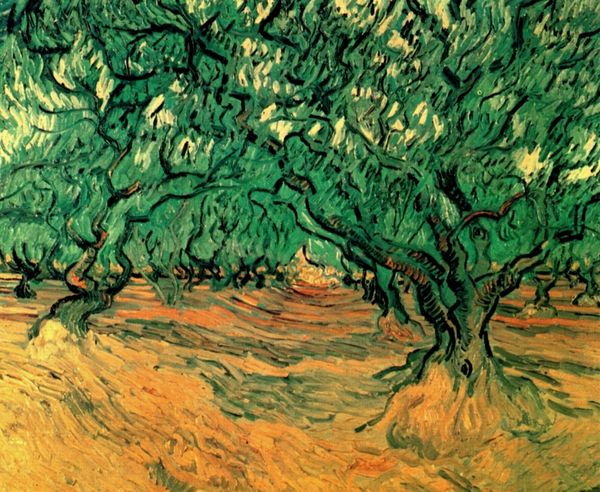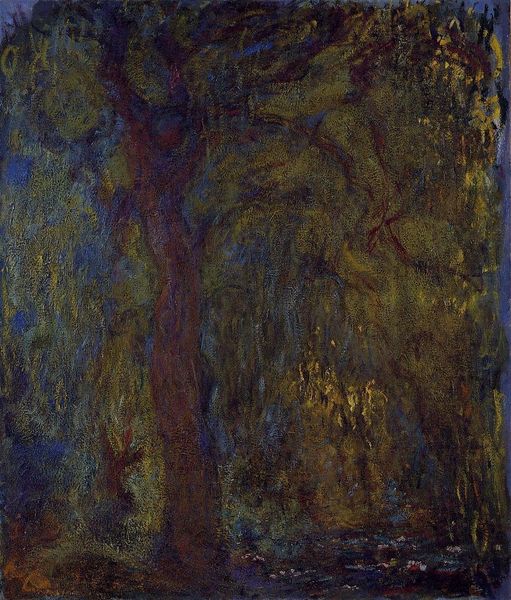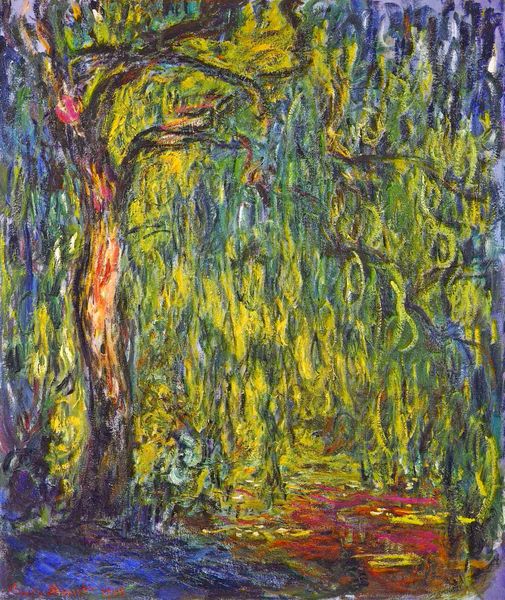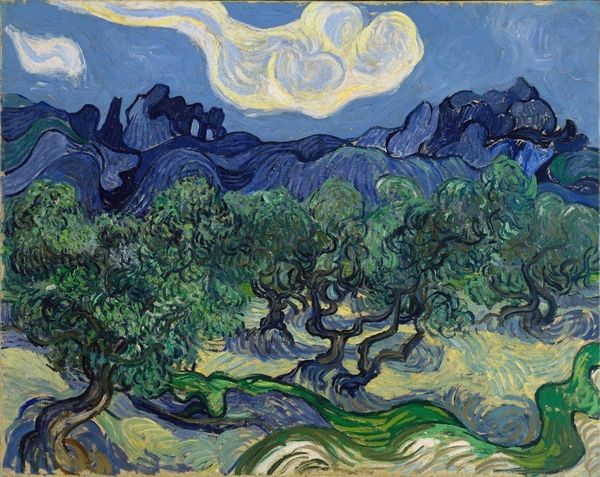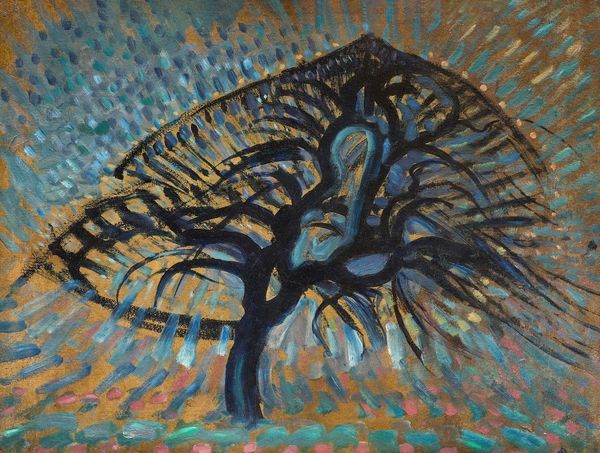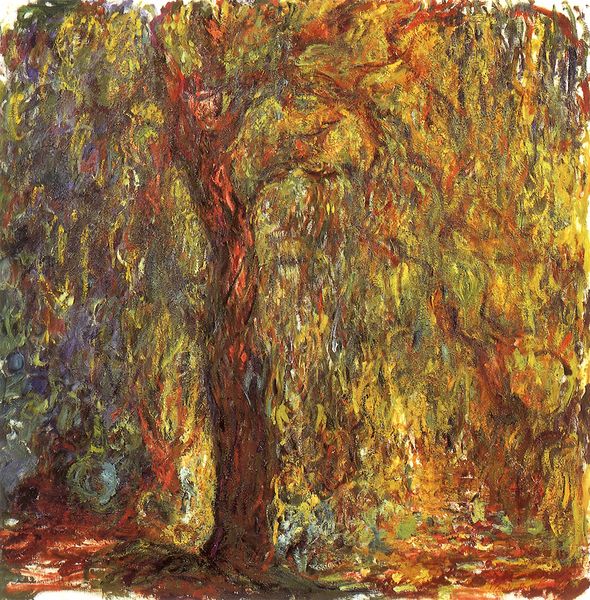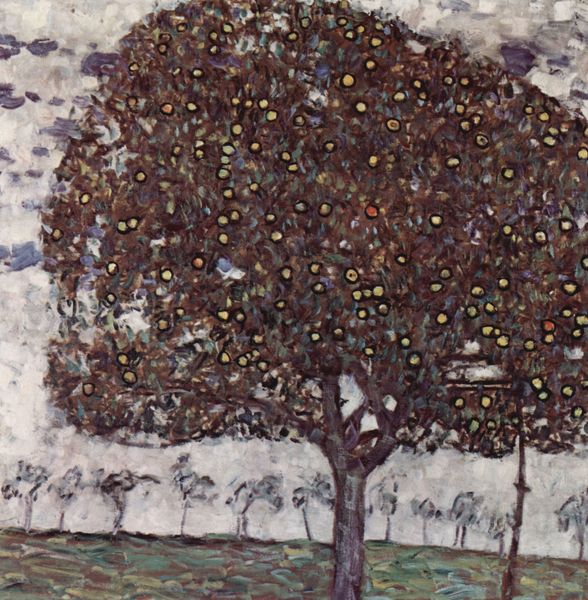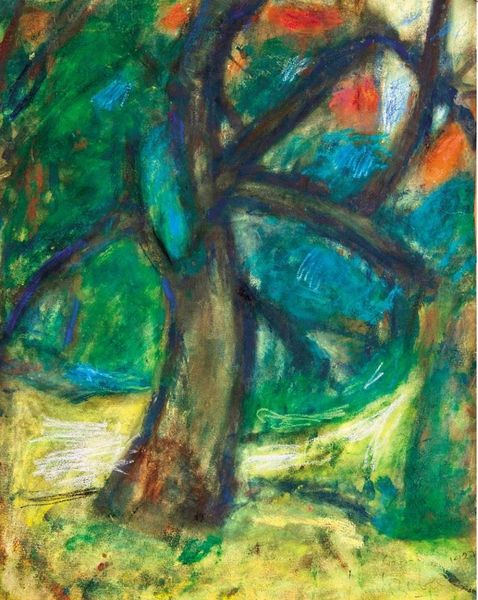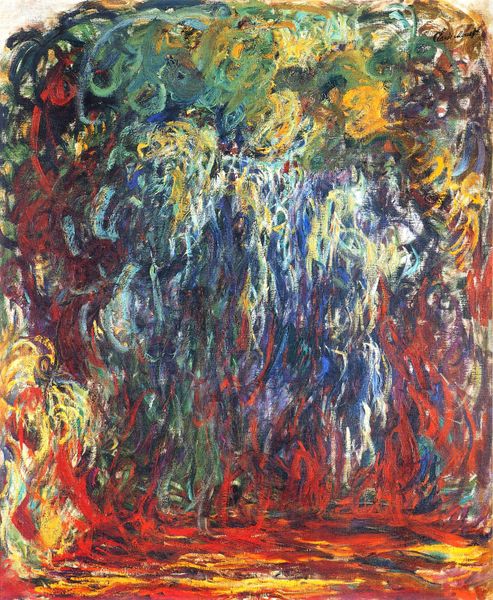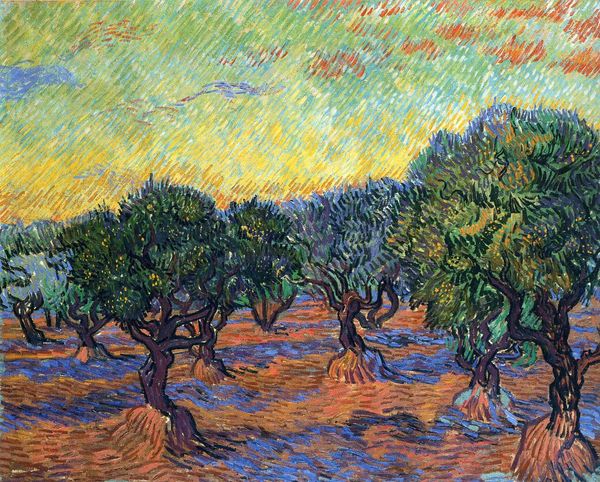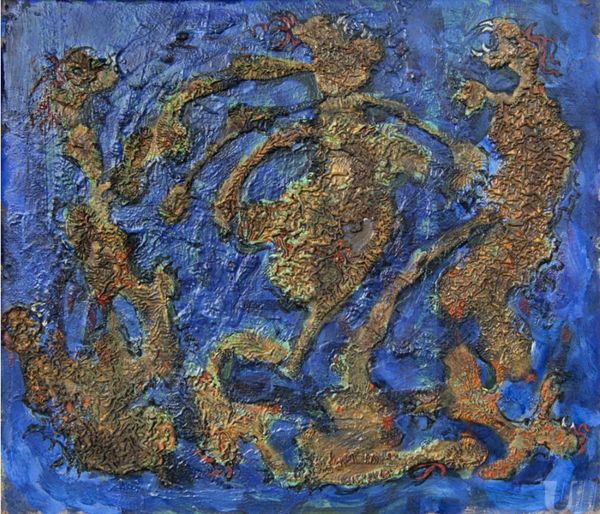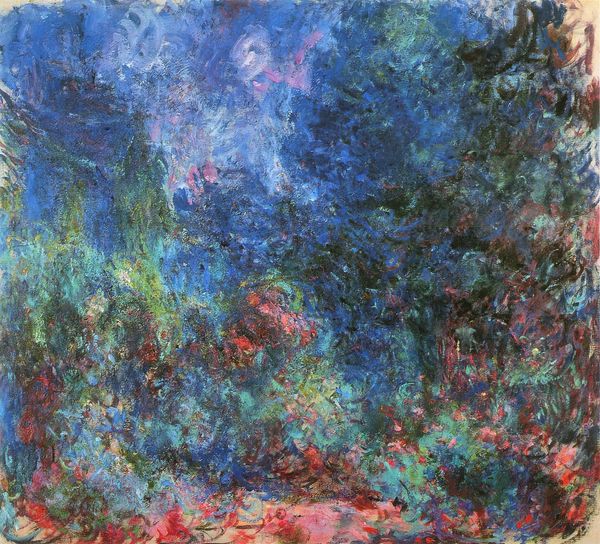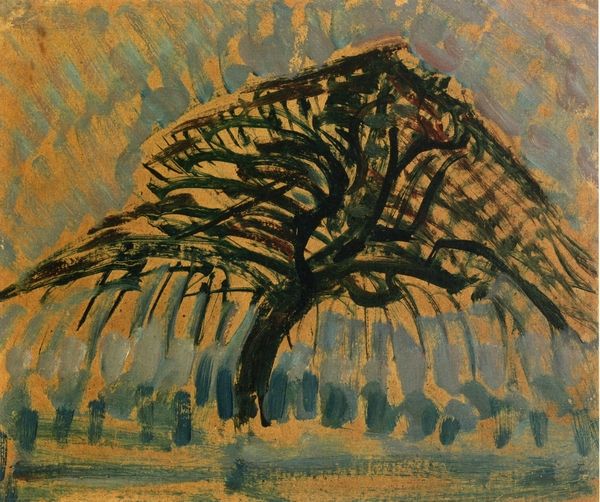
Dimensions: 70 x 99 cm
Copyright: Public domain
Editor: Here we have Piet Mondrian's "Avond (Evening): The Red Tree," painted in 1910 using oil paint. The strong red against the pervasive blues makes the tree feel almost like it’s burning. What's your take on this piece? Curator: The raw emotion here is undeniable, especially when viewed through the lens of early 20th-century anxieties. Mondrian, though later known for pure abstraction, here grapples with figuration. But why this radical departure from academic landscape painting? He lived during immense change, rife with burgeoning socialist movements, evolving concepts of sexuality, and the devastation of war. Can't you feel that sense of unrest and upheaval embedded in the frantic brushstrokes, as the symbolist style merges with expressionism? Editor: I see that! So, the "red" is more than just a colour choice; it's symbolic? Curator: Absolutely. Consider the symbolism of the colour red – often associated with passion, revolution, and even danger. In this context, the "red tree" could symbolize the intense societal changes happening, maybe even the violence needed to change structural problems in Europe and beyond. It’s also shedding something – leaves? Is it the old order? What do you think it represents? Editor: Maybe, in that light, it shows that destruction is necessary to create something new and different. I initially thought that the palette seemed a bit jarring, but knowing this changes how I view the artwork and the intent of the artist! Curator: Precisely. It's through these dialogues, linking art with the societal and political climate, that we truly uncover its potent messages. The emotional power behind visual abstraction has a profound influence in modern and contemporary activism too. Editor: It has opened up a whole new way of thinking about it. Thank you!
Comments
No comments
Be the first to comment and join the conversation on the ultimate creative platform.
